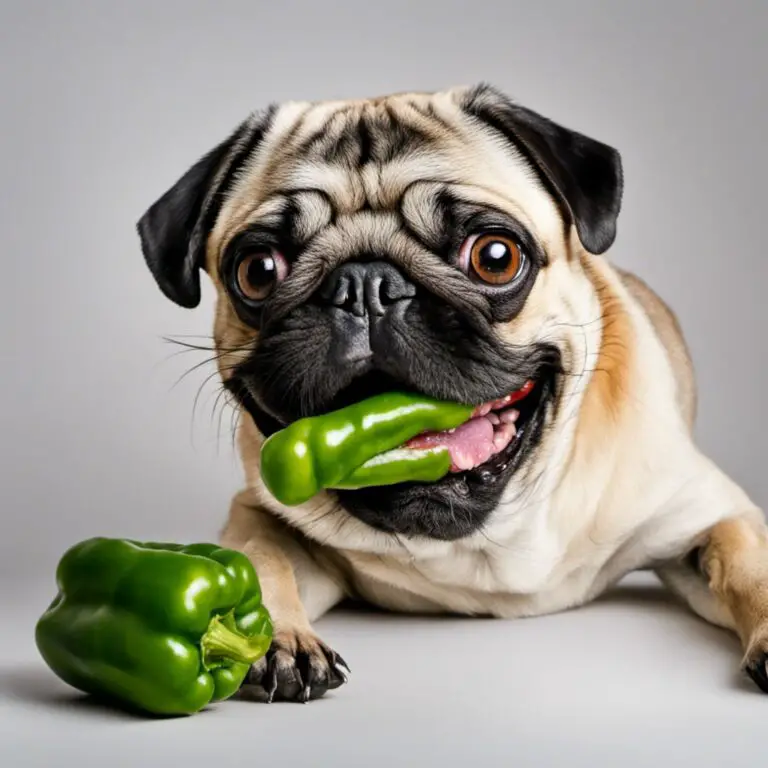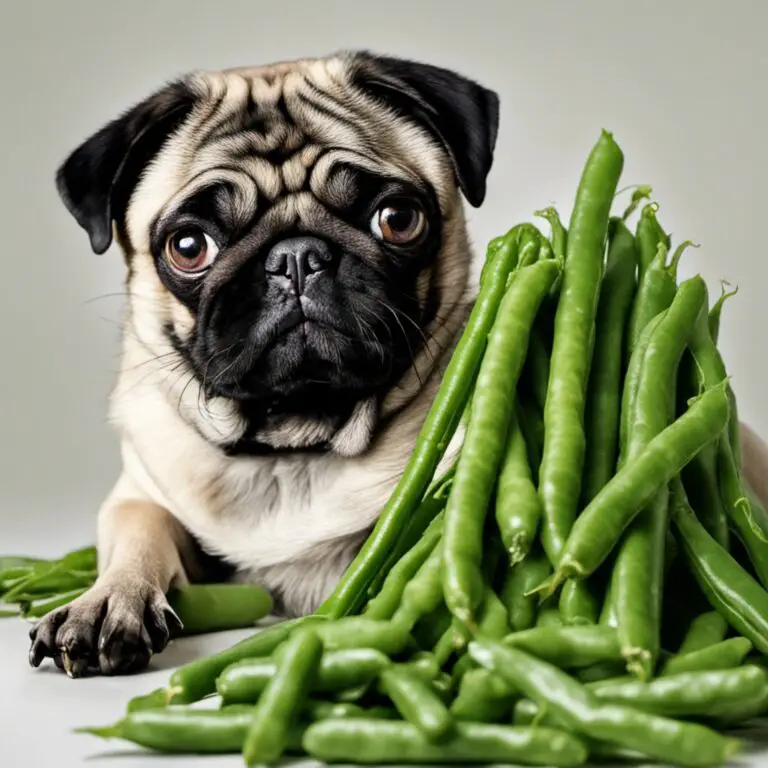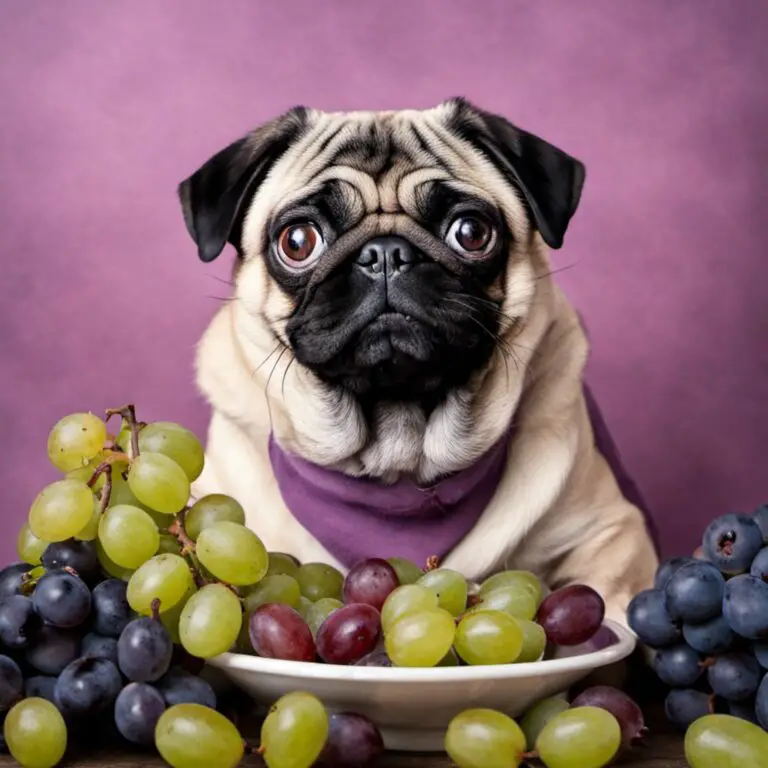Can Pugs Eat Ham? A Comprehensive Guide for Pet Owners
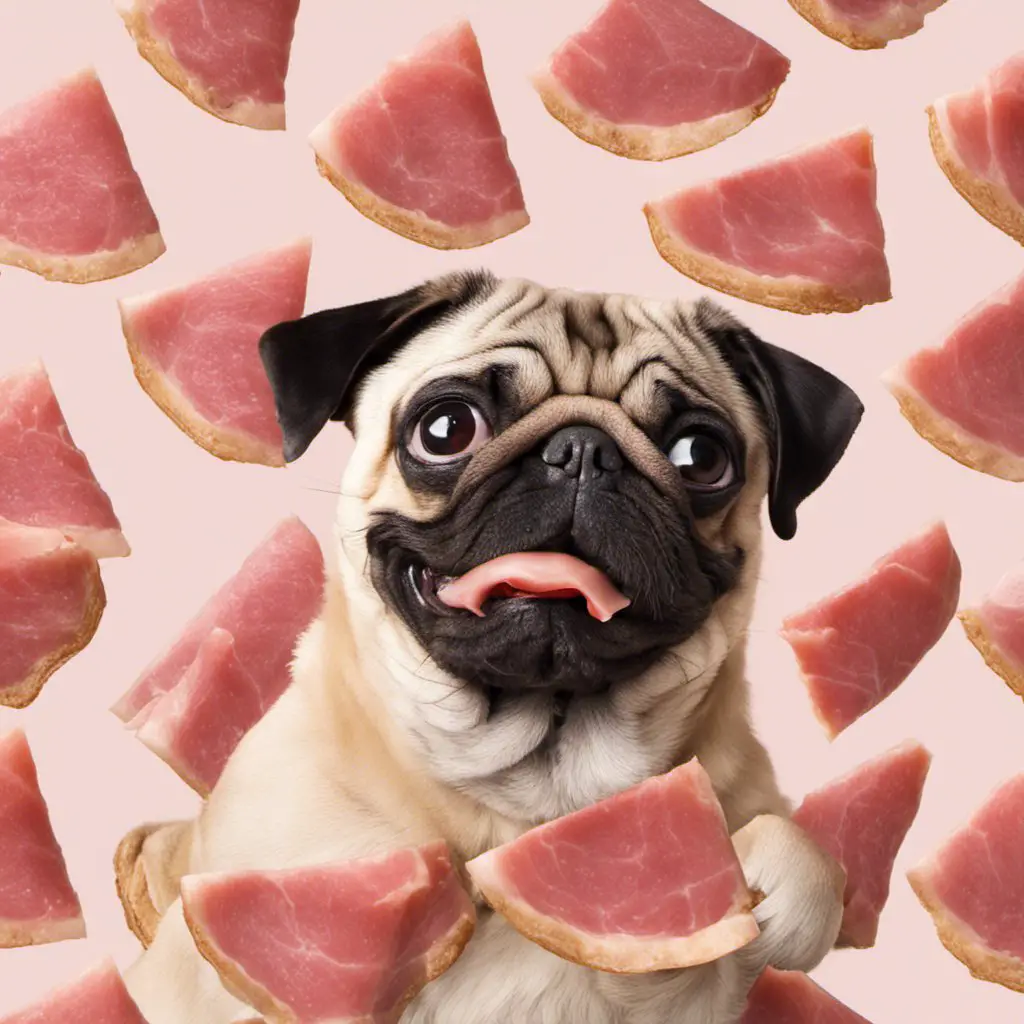
Can Pugs Eat Ham? As a pug owner, you might be curious if sharing a bit of ham with your beloved pet is safe. Ham is an enticing and savory treat, but is it suitable for pugs? The simple answer to the question, “Can pugs eat ham?” is no. Feeding your pug ham is not recommended for several reasons, which we will explore in this article.
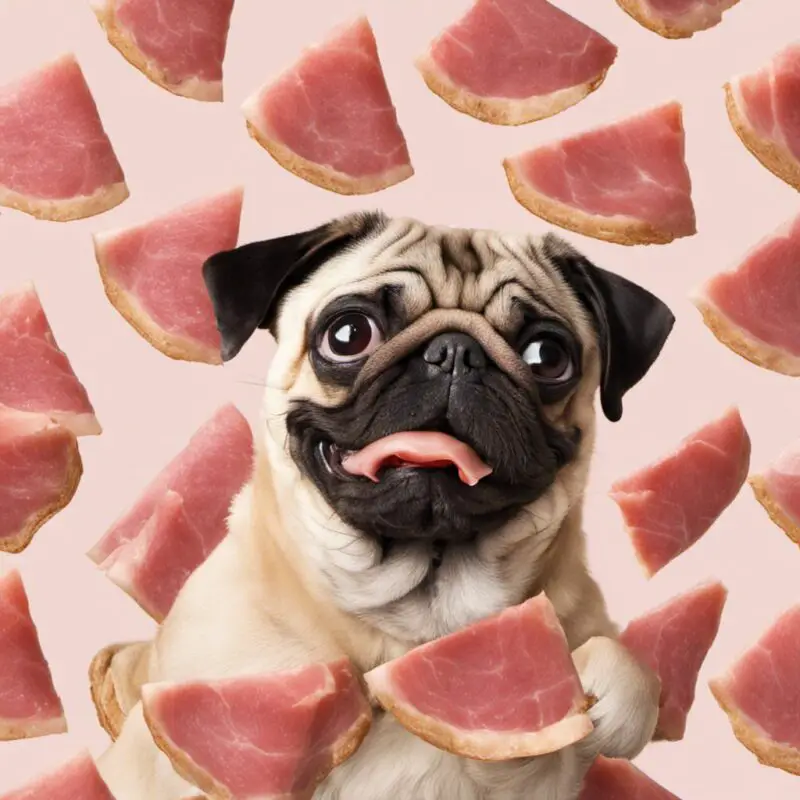
Ham is high in saturated fats, salt, and preservatives, making it an unhealthy choice for your pug. These substances can lead to excessive weight gain and various health issues, such as pancreatitis or heart problems. It’s crucial to understand the potential risks and complications associated with feeding your pug ham before deciding to include it in their diet.
In this article, we will delve into the reasons why ham is not suitable for pugs, as well as explore alternative healthier options for treats and snacks that your pug can enjoy safely. By being aware of your pug’s dietary needs, you can ensure they remain happy and healthy for years.
Contents
Table of Contents
What Pugs Can Eat

Pugs can enjoy a variety of dog food, fruits, vegetables, and snacks as part of their diet. Providing them with a well-balanced and nutritious meal plan helps to keep them healthy and happy. Here are some of the safe foods that you can add to your pug’s daily diet:
Get The Free Food Eating Guide That Keeps My Pug Happy and Playful Even at 13 Years Old
100% Beginner Friendly & Lists Real Foods Your Pug Can Actually Eat!
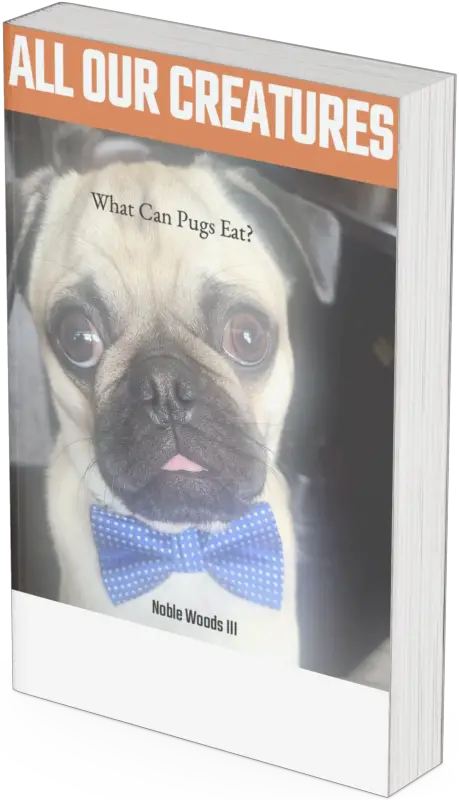
Fruits and berries: Pugs can consume fruits such as blueberries and raspberries, which are rich in antioxidants and vitamins. They also benefit from eating low-calorie fruits like cantaloupe, as these help them stay hydrated and revitalized without causing weight gain.
Fish: Salmon is an excellent source of protein and omega-3 fatty acids, which help maintain a pug’s healthy skin and coat. It is essential to cook the salmon before feeding it to your pug and to remove any bones.
Eggs and protein: Eggs are a great source of protein for pugs and can be fed occasionally. They should be fully cooked to ensure your pug doesn’t ingest harmful bacteria. Peanut butter is another protein-rich snack that pugs can enjoy, but make sure it’s free of xylitol, a toxic additive for dogs.
Vegetables: Pugs can eat various vegetables, such as carrots, broccoli, and sweet potatoes. These vegetables provide nutrients and dietary fiber, making them a wholesome addition to your pug’s mealtime.
In summary, pugs can thrive on a diet consisting of dog food, fruits, vegetables, and snacks such as berries, salmon, eggs, and peanut butter. It’s essential to monitor their intake and ensure they’re not consuming anything harmful or toxic. With a well-balanced diet, your pug will remain happy and healthy.
The Ham Debate
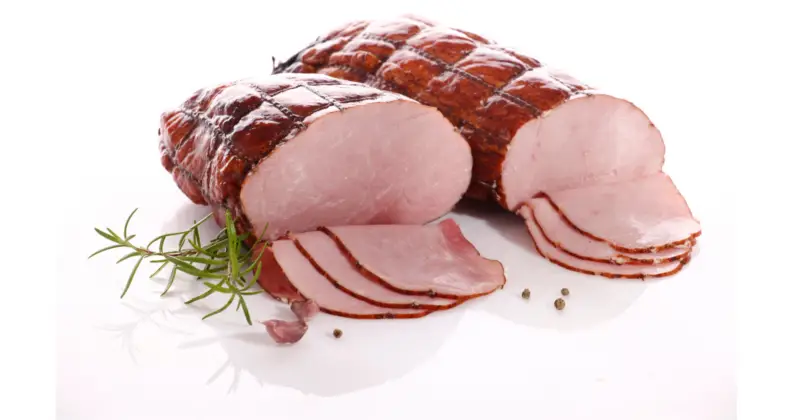
Ham, a popular type of pork, is often a debated topic when it comes to feeding pets like pugs. While it is a source of protein, its safety for pugs is questionable. This is mainly due to certain attributes found in ham, such as:
- High-fat content: Ham, being a higher-fat protein, should only be offered to dogs in strict moderation. A diet that’s too high in fat is unhealthy for dogs, including pugs.
- High salt content: Ham has a very high sodium content, which is detrimental to a dog’s health. Consuming excess sodium can lead to hypertension, kidney disease, heart disease, and obesity in dogs.
Another concern is the presence of nitrates and nitrites in ham. These are used as preservatives and are known to be toxic to dogs. When feeding a pug, avoiding foods containing these harmful substances is vital.
Though it’s tempting to share a slice of ham with your pug, it’s crucial to consider the risks and stick to meats that are low in salt and additives. You may opt for other cooked, lean meats like chicken, turkey, or even pork without added preservatives as healthier alternatives for your pug’s protein needs.
Keeping in mind these factors, it becomes clear that moderation is key, and ham may not be the best choice for pugs. An emphasis should be placed on providing them with a well-balanced diet that meets their nutritional requirements while avoiding toxic substances found in certain foods like ham.
Risks of Feeding Ham to Pugs
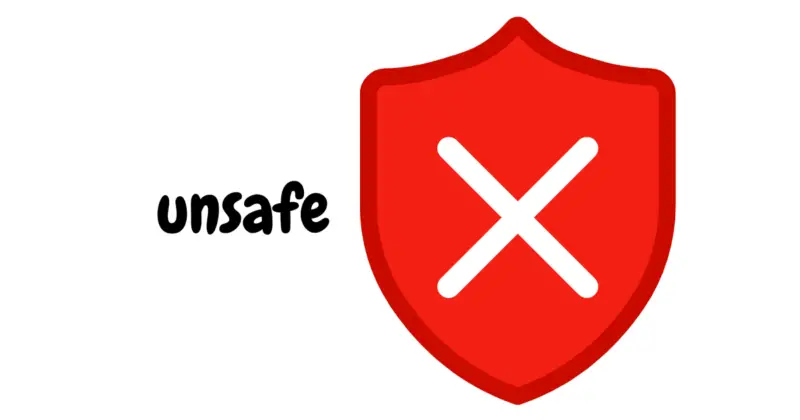
Feeding ham to pugs can lead to several health problems due to its high sodium and fat content. Ham’s high sodium content may cause hypertension, kidney disease, heart disease, and obesity in dogs.
When dogs consume excessive amounts of fat, they may be at risk for developing pancreatitis, an inflammatory condition of the pancreas. Symptoms of this condition can include vomiting, diarrhea, and lethargy. Additionally, the high-fat content may contribute to making your pug overweight, leading to other health issues.
Bone fragments in the ham may pose a choking hazard or cause internal injury by splintering. These fragments can lead to blockages in the digestive tract and potentially require surgery for removal.
The nitrates and nitrites present in ham are toxic to dogs. Ingesting these chemicals may lead to vomiting, diarrhea, lethargy, and seizures. In severe cases, poisoning from nitrates and nitrites can result in death.
Feeding pugs ham can also lead to dehydration due to the high salt content. This can affect the dog’s kidney function and increase the risk of kidney damage.
Ham may cause an allergic reaction in some dogs. Symptoms of an allergic reaction can include hives, swelling, difficulty breathing, and increased urination. In severe cases, the allergy can lead to anaphylaxis, a life-threatening condition marked by a drop in blood pressure and potential coma.
In conclusion, it’s important to know the risks associated with feeding ham to your pug. The high sodium, fat content, and potential allergens can lead to numerous health issues, such as obesity, kidney damage, and even poisoning. Therefore, it’s crucial to avoid feeding ham to your pug to ensure their long-term health and well-being.
Ham Alternatives for Pugs

When it comes to providing your pug with a healthy and balanced diet, there are better meat options to consider instead of ham. Ham can be high in salt and may contain nitrates, which can be toxic to dogs. In this section, we’ll discuss a few ham alternatives that are safe and healthy for your pug.
Turkey: Turkey is an excellent lean meat option for your pug. It is high in protein and low in fat, making it a nutritious and easily digestible choice. Ensure that the turkey is cooked well and remove any bones before serving it to your pug, as cooked bones can splinter and pose a choking hazard.
Fish: Fish is another healthy alternative to ham for your pug. It is a rich source of omega-3 fatty acids, which can be beneficial for your pug’s skin and coat health. Fish like salmon and whitefish are good options, but ensure they are cooked and deboned before serving. Avoid feeding your pug raw fish, as it may contain harmful parasites.
Digestible Treats: Treats, such as cheese, small portions of cooked meat, and commercially available dog treats, can also be excellent alternatives to ham. As mentioned in this article, cheese, hot dogs, and little portions of cooked meat are common dog treats used by many trainers. Ensure to moderate these treats to prevent weight gain or digestive issues.
In conclusion, opt for easily digestible, lean meats such as turkey and fish when choosing a ham alternative for your pug. Ensure that any meats you offer are cooked and deboned to prevent choking hazards, and keep in mind moderation is key when offering treats. By providing your pug with these healthy alternatives, you’ll proactively approach their nutrition and overall well-being.
Can Pugs Eat Ham? Watch this
Debunking The Myths: Foods Deemed Harmful
Many misconceptions surround certain foods and their effects on dogs, particularly pugs. This section aims to debunk common myths while providing accurate information on some potentially harmful foods for pugs.
Onions and Garlic: It’s true that onions and garlic can be toxic to dogs, including pugs. These foods contain compounds called thiosulfates, which can damage red blood cells, leading to anemia if consumed in large quantities.
Avocado: Although avocados are healthy for humans, they are unsafe for pugs. The fruit contains a toxin called persin, which can cause vomiting and diarrhea in dogs.
Macadamia Nuts: Macadamia nuts are indeed harmful to dogs. Consumption of these nuts can cause weakness, vomiting, tremors, and hyperthermia in pugs.
Chocolate: Chocolate is a well-known toxic food for dogs due to the presence of theobromine, a compound that is difficult for dogs to metabolize. It can cause rapid heartbeat, vomiting, diarrhea, and even death in pugs.
Corn: While corn itself isn’t toxic to pugs, corn on the cob can be dangerous. Chewing on the cob can cause intestinal blockage, requiring veterinary intervention.
Green Tomatoes: Unripe green tomatoes contain a compound called solanine, which can be toxic to dogs. Ripe red tomatoes, however, are generally safe when given in moderation.
Artificial Sweeteners: Xylitol, an artificial sweetener found in many sugar-free products, is highly toxic to dogs. It can cause a rapid release of insulin, leading to hypoglycemia (low blood sugar) and even liver failure in pugs.
Grapes: Grapes, along with raisins, can be toxic to pugs, causing kidney failure. It’s best to avoid giving your pug any grapes or raisins.
Mushrooms: While only some mushrooms are toxic to dogs, it’s best to avoid giving your pug any type of mushrooms. Toxic varieties can cause severe liver and kidney damage, and it can be difficult to distinguish between safe and unsafe mushrooms.
Understanding Pug Nutrition

Pugs, like all dogs, require a well-balanced and nutritious diet to maintain their overall health. Their unique physical features and predisposition to certain health issues, such as obesity, make it essential for pug owners to pay close attention to their pet’s nutrition.
One key aspect of a pug’s diet is calorie intake. Due to their compact size and tendency towards weight gain, monitoring the number of calories they consume is important. A diet that is too high in calories can lead to obesity, which in turn increases the risk of diabetes and other health issues.
Including nutrient-rich foods with the right balance of vitamins, iron, and calcium is vital to support their overall well-being.
When it comes to the types of foods pugs can eat, there is a wide range of options, from high-quality commercial dog food to homemade meals. It is always best to consult with a vet for personalized guidance on specific dietary needs for your pug. Keep in mind that a pug’s nutritional requirements can change over time, depending on factors like age, activity level, and any underlying health conditions.
Some pug owners may wonder about feeding their pets certain human foods, such as ham. While ham is a popular treat for many people, it is not the healthiest choice for pugs. Ham is high in sodium and fat, which can be detrimental to a pug’s health, especially when consumed in large quantities. Additionally, processed meats like ham can contain additives that may be harmful to canines.
In conclusion, maintaining proper nutrition for your pug is crucial to support their overall health and well-being. Focus on providing a balanced diet with the appropriate caloric intake and a variety of nutrient-rich foods. As always, consult a veterinarian for personalized recommendations, and avoid feeding your pug potentially harmful human foods like ham.
Working with Your Vet

If you suspect your pug has consumed ham and is showing signs of distress, it’s crucial to consult your veterinarian. Symptoms such as vomiting, weakness, lethargy, or even seizures could indicate that your pug is having a negative reaction to the high sodium or other harmful substances found in ham.
In cases where your pug is experiencing severe symptoms, such as difficulty breathing or loss of consciousness, it’s essential to contact your veterinarian immediately. They may advise you to bring your pug in for an emergency evaluation or provide instructions on performing first aid at home.
Maintaining open communication with your veterinarian is crucial for your pug’s long-term health. Regular check-ups and discussing any concerns regarding your pug’s diet can help prevent potential issues related to consuming harmful foods like ham. Your veterinarian is the best source of information when it comes to understanding your pug’s unique dietary requirements.
It’s important to be aware of other foods that can pose a danger to your pug. Familiarizing yourself with these foods can help you avoid an emergency situation with your dog. Your veterinarian can recommend a list of safe and nutritious alternatives to ham that will still provide the necessary nutrients for your pug.
In conclusion, avoiding ham in your pug’s diet is essential for their well-being. If your pug accidentally consumes ham or displays concerning symptoms, don’t hesitate to reach out to your veterinarian for advice and support. Their guidance can ensure that your pug remains happy and healthy throughout their life.
Frequently Asked Questions: Can Pugs Eat Ham
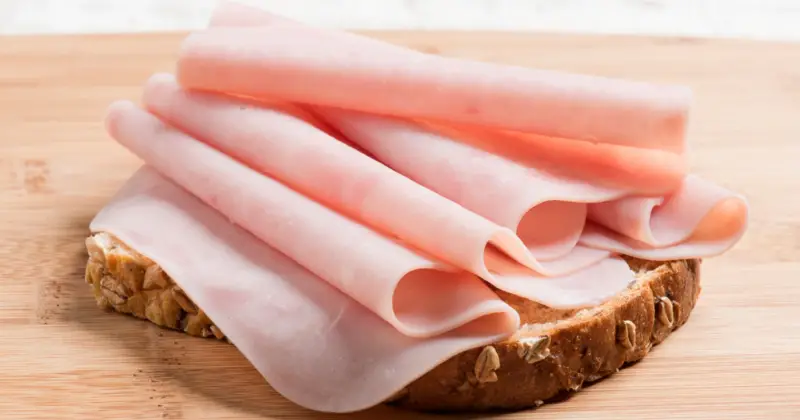
Is ham safe for pugs to consume?
No, ham is not considered safe for pugs to consume. Market-bought ham is high in salt and contains nitrates and nitrites, which are known to be toxic to dogs source.
What are the potential risks of feeding ham to pugs?
Feeding ham to pugs may lead to a number of health issues, including obesity, high blood pressure, and cardiovascular problems. The high sodium content in ham can cause excessive thirst and urination, which may further contribute to kidney issues in the long run. In addition, the presence of nitrates and nitrites can be toxic to dogs source.
Can pugs have ham bones?
It is not recommended to give ham bones to pugs, as they can easily splinter and cause injuries to the digestive tract. Instead, consider providing pugs with specially designed chew toys or dental chews that are safe for them to gnaw on without the risk of injury.
How much ham can a pug safely eat?
While it is generally not safe for pugs to consume ham, if they happen to eat a very small amount, it is unlikely to cause severe harm. However, it is best to avoid feeding any ham to your pug due to the high sodium content and potential toxicity from nitrates and nitrites.
Are there healthier alternatives to ham for pugs?
Yes, there are healthier alternatives to ham for pugs. Dogs require a balanced diet that includes high-quality proteins, healthy fats, carbohydrates, vitamins, and minerals source. Opt for feeding pugs lean meats, such as chicken, turkey, or fish, and always ensure they are properly cooked without added salt or seasoning.
What to do if a pug accidentally eats ham?
If a pug accidentally eats a small amount of ham, closely monitor them for any signs of distress, such as vomiting, diarrhea, excessive thirst, or lethargy. If your pug shows any of these symptoms or you are concerned about their well-being, contact your veterinarian immediately for advice and treatment options.


